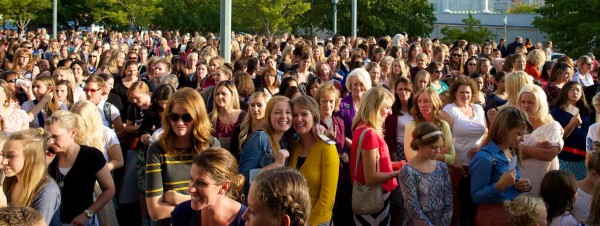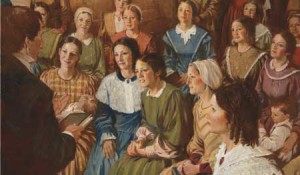 The Church of Jesus Christ of Latter-day Saints published an essay regarding Joseph Smith’s Teachings about Priesthood, Temple, and Women. The essay makes it clear that women exercise priesthood authority even though they are not ordained to priesthood office.
The Church of Jesus Christ of Latter-day Saints published an essay regarding Joseph Smith’s Teachings about Priesthood, Temple, and Women. The essay makes it clear that women exercise priesthood authority even though they are not ordained to priesthood office.
The essay was published in the series of Gospel Topics Essays on LDS.org. In 2013, the Church began to publish a series of straightforward, in-depth essays to provide accurate information about some of the Church’s teachings, practices and history. These essays—13 published to date—were prepared through extensive research by men and women Church scholars and carefully reviewed by members of the First Presidency, the Quorum of the Twelve Apostles, and other General Authorities and women leaders to provide official, authoritative, and transparent information.
 The essay explains the following:
The essay explains the following:
- In 1842, Joseph Smith organized the Relief Society “in the Order of the Priesthood after the pattern of the Church.” It was established by a prophet who acted with priesthood authority to give women authority, sacred responsibilities, and official positions within the structure of the Church
- In early Church history, women frequently blessed the sick by the prayer of faith. In reference to these healing blessings, Relief Society general president Eliza R. Snow explained in 1883, “Women can administer in the name of JESUS, but not by virtue of the Priesthood.” Women’s participation in healing blessings gradually declined in the early 20th century as Church leaders taught that it was preferable to follow the New Testament directive to “call for the elders.” By 1926, Church President Heber J. Grant affirmed that the First Presidency “do not encourage calling in the sisters to administer to the sick, as the scriptures tell us to call in the Elders…” The current Church handbook directs that “only Melchizedek Priesthood holders may administer to the sick or afflicted.”
- Joseph Smith introduced temple ordinances and covenants to men and women. Temple ordinances endowed women and men “with power from on high.” Temple ordinances make possible the exaltation of God’s children.
- As in the earliest days of the Church, men are ordained to priesthood offices, while both women and men experience the power and blessings of the priesthood in their lives.
- Men and women continue to officiate in sacred ordinances in temples much as they did in Joseph Smith’s day. The priesthood authority exercised by Latter-day Saint women in the temple and elsewhere remains largely unrecognized by people outside the Church and is sometimes misunderstood or overlooked by those within.
- Today, women lead three significant organizations within the Church: the Relief Society, the Young Women, and the Primary.
- Women preach and pray in congregations, fill numerous positions of leadership, participate in priesthood councils at the local and general levels, and serve formal proselytizing missions across the globe.
- In these and other ways, women exercise priesthood authority even though they are not ordained to priesthood office.
Learn more in the conference talk “The Keys and Authority of the Priesthood,” where Elder Dallin H. Oaks explains that priesthood keys direct women as well as men, and priesthood ordinances and priesthood authority pertain to women as well as men.
Read the entire essay “Joseph Smith’s Teachings about Priesthood, Temple, and Women.”

